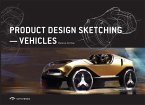The approach the authors of The Car in 2035, Mobility Planning for the Near Future propose: pragmatically retaining and enhancing the best of existing infrastructure while concurrently integrating and utilizing developing technologies in order to provide better mobility for the entire populace. Each chapter of The Car in 2035 is written by an expert in the subject being discussed. Those contributors are from a variety of disciplines and perform a variety of functions ranging from professional transportation planners to analysts, educators, architects, designers, and engineers. The book is divided into three main sections. One focuses mainly on the mode of transportation, as in The Car. The next concentrates on the area where travel or commuting takes place, The Street. And the last one takes a look at governance and Policy. Despite being based in scholarship and dealing with a serious topic, the writing is neither dull nor stuffy. Refreshing too is that many of the major points advocated are presented as point and counterpoint so the reader may consider the pros and cons. One premise needing no point/counterpoint is reasserted numerous times by multiple contributors. It will resonate with and be especially appreciated by Society of Automotive Historians members: the past must inform the present and the future. --Helen V Hutchings, SAH Journal May / June 2013
THE CAR IN 2035 is a good title and I was anxious to learn about a future in which the car s role as a shaping force in American life is diminished. But this book, edited by Kati Rubinyi and published by the Civic Projects Foundation, Los Angeles, is not going to take the reader down the road to a post-carbon world. Rather it is a practical and multifaceted view of the future of mobility, grounded in the precepts of Southern California. --Chip Lord, Architect's Newspaper
THE CAR IN 2035 is a good title and I was anxious to learn about a future in which the car s role as a shaping force in American life is diminished. But this book, edited by Kati Rubinyi and published by the Civic Projects Foundation, Los Angeles, is not going to take the reader down the road to a post-carbon world. Rather it is a practical and multifaceted view of the future of mobility, grounded in the precepts of Southern California. --Chip Lord, Architect's Newspaper








